There’s always a learning curve when a shop integrates a new process. At some point, however, most manufacturers will seek to move past the basics and bring their capabilities to the next level.
That scenario played out at W. Haut Specialty Co. a few years ago when the company sought to upgrade its waterjet machining capabilities. More specifically, the company wanted to cut faster and reduce the effects of taper and stream lag, two naturally occurring phenomena in waterjet machining. The solution, a machine equipped with an articulating cutting head and custom pump technology from waterjet manufacturer Flow International (Kent, Washington), reduced cycle times, improved part accuracy and eliminated the need for secondary operations in many cases.
W. Haut Specialty Co. is a job shop in Menomonee Falls, Wisconsin, that serves a wide variety of industries, including architectural, medical, aerospace, mining and paper. In addition to machined components, the company offers prototypes, tooling, fixtures, gages, stampings and more. Equipment at the 26,000-square-foot shop includes five VMCs, seven mills, three band saws, four turning machines, welders, a shear and a punch press. The family-owned enterprise was founded in 1960 by Willard Hout. He was succeeded by his sons, John and Paul, who run the business today along with a third-generation Haut: Paul’s son, Michael.
Initially, the shop outsourced its waterjet work. However, as increasing numbers of jobs called for waterjet operations, the Hauts decided it would be more beneficial to bring that capability in-house. “Our goal was to expand that business into new market opportunities and gain new customers,” recalls Paul Haut, president of manufacturing. “We certainly accomplished that.”
The first waterjet the shop purchased featured a 4- by 8-foot table and a 55,000-psi pump. Waterjet machining enabled the shop to tackle glass, stone, plastics, rubber, foam and other materials it had never cut before, Mr. Haut says. Additionally the ability to cut near-net shapes saved time and reduced tooling costs because some parts could be partially processed on the waterjet before moving on to other machines. The machine also proved useful for drilling holes in large plate.
In fact, the shop became successful enough with waterjet cutting that it eventually attracted more work than it could handle. Seeking ways to produce parts faster, the Hauts set out again to explore options for waterjet technology. This time, however, they had the experience to know precisely what factors were limiting the potential of their equipment.
One of those factors was the tendency of the jet stream to erode material unevenly during the cut, producing a V-shaped taper. This occurs naturally in waterjet cutting because the power of the cutting stream dissipates as it penetrates further into the material. The faster the cutting speed, the greater the kerf taper error, which, according to Flow, can approach 0.01-inch per side. One remedy is to cut slower, but that approach also reduces productivity. Another potential option, grinding along the edge of the cut, requires adding another operation to the manufacturing process, along with the associated time and cost.
A second, similar limiting factor was stream lag, which occurs when the cutting stream can’t keep up with the moving nozzle. As a result, the point where the stream exits the bottom of the part lags behind the point where it enters the top of the part. This can create flared corners and other geometry errors that can throw parts out of tolerance. Again, a possible solution is to slow the cutting speed, but productivity would suffer as a result.
Of course, in addition to ensuring accuracy, the shop’s overall goal in seeking to reduce taper and stream lag was to cut faster. The Hauts had heard that more powerful waterjet pumps were available that could potentially speed operations. So, any solution would also need to provide significantly higher pressure than 55,000 psi. After talking with other waterjet shops about their equipment, attending tradeshows and researching various suppliers’ offerings on the Internet, they settled on a model that could meet all three requirements: a Flow 6- by 12-foot Integrated Flying Bridge with Dynamic Waterjet and a Hyperjet pump.
Flow’s Dynamic Waterjet with Active Tolerance Control technology is designed to counter taper and stream lag in order to ensure that the machine cuts at top speed while maintaining the requisite precision. At the root of the system is a cutting head with an articulating wrist and a set of mathematical models that the company refers to collectively as SmartStream. These SmartStream models tilt the cutting head to the side to eliminate taper and tilt it forward to control the stream. According to the manufacturer, Dynamic Waterjet technology can enable shops to produce parts significantly faster while meeting tolerances ranging from 0.001 to 0.003 inch.
The company adds that FlowMaster control software makes this technology easy to use
for the operator. That’s because all the mathematical calculations work behind the scenes to trigger the appropriate commands to the cutting head’s five axes. The operator simply enters basic cutting parameters, such as material type, material thickness, cutting speed, desired edge quality and so on, and the software does the rest.
At W. Haut Specialty Co., this technology has improved both accuracy and cutting speed, among other benefits, says Michael Haut, waterjet manager. “Now, we don’t need to perform secondary processing to eliminate taper in holes or inside corners,” he notes. “Dynamic Waterjet and FlowMaster take care of it all.”
According to Flow, increased pressure enables increased cutting speeds, regardless of the workpiece’s material or thickness. And at 94,000 psi, the HyperJet pump has increased operating pressure by nearly 60 percent compared with W. Haut’s first waterjet. “We are cutting three to four times faster on our Flow system,” Michael Haut says. “Before, if we wanted straight edges and sharp corners, we had to slow down the cutting speed and even perform secondary processing in order to eliminate taper in holes. Both cost us time and money. Now, we quote jobs at rates that are 20 to 25 percent lower than we did with the 55,000-psi waterjet. The combination of Dynamic Waterjet and Hyperjet make the parts cost less. Faster, less-expensive parts are a great benefit we can pass on to our customers.”











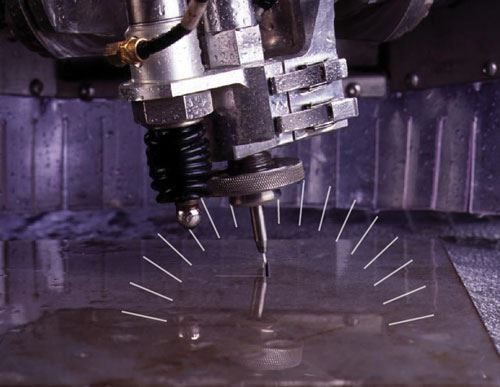
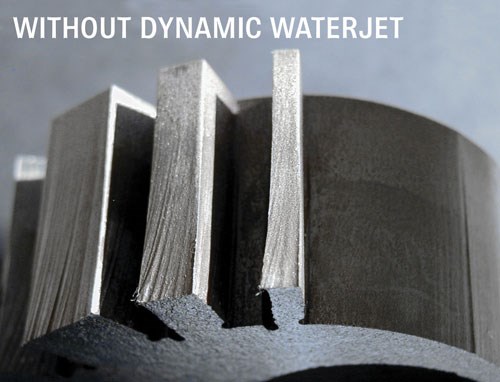
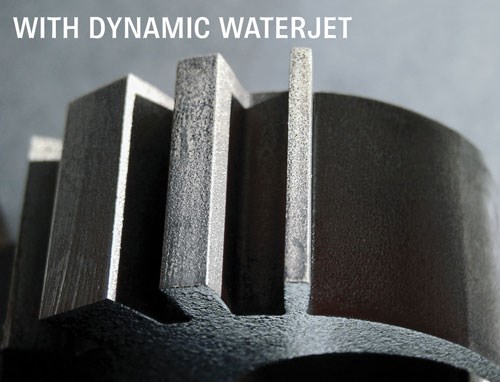
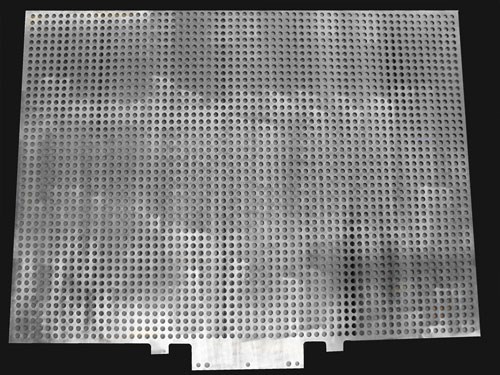
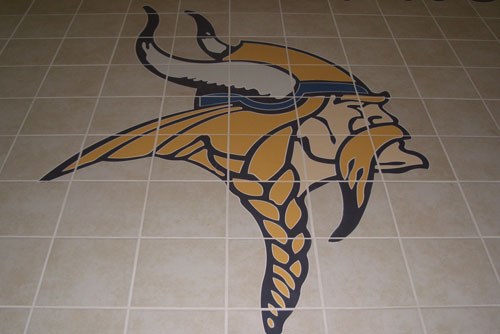



























.jpg;maxWidth=300;quality=90)










.jpg;maxWidth=300;quality=90)








